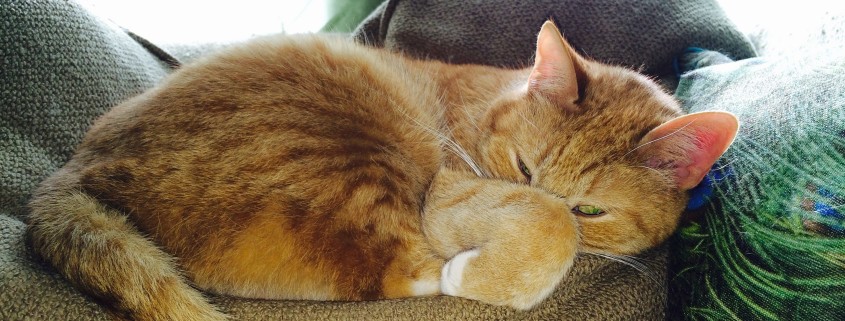Herpes in Cats
Feline herpes, or feline viral rhinotracheitis, is the most common type of upper respiratory viruses in cats. It is highly contagious and easily transmitted if a cat comes in contact with an infected cat or with something an infected cat has touched. Humans and dogs are not suceptable to contracting this type of herpes virus. Rhinotracheitis is one of the diseases addressed by the core vaccines recommended for all cats.
The virus presents like a common cold in humans with runny eyes, runny nose, sneezing, congestion, fever and lethargy. The eyes can be affected by inflammation, ulcers and lesions around the eyes. Not all infected cats show symptoms and cats can still transmit the virus even if they are symptom free. Any cat can contract herpes, but it is most commonly spread in areas with lots of cats such as boarding facilities and rescues. Breeds with flat faces like Persians and Himalayans have a more difficult time with the respiratory symptoms due to the shape of their nasal passages.
There is no cure for herpes and once a cat has the virus they usually have it for life, but symptoms can be managed with help from your veterinarian. If the virus is affecting the eyes, the vet can prescribe medicated drops or creams to help clear them up. Reducing stress and maintaining moisture in the air with a humidifier will help reduce flair ups. While the virus is not deadly, symptoms are certainly uncomfortable.
Pet parents looking for a natural way to combat their cat’s herpes can talk to their veterinarian about L-Lysine supplementation. L-Lysine is an amino acid that can help prevent the herpes virus from replicating, therefore easing symptoms and reducing risk of infecting another cat. If your cat is going to a boarding facility or will be exposed to multiple cats you can supplement them with L-Lysine to help prevent them from contracting the virus.
Studies
Felid herpesvirus type 1 infection in cats: a natural host model for alphaherpesvirus pathogenesis.


